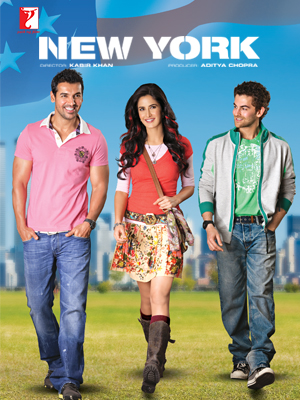Hello learners, This blog is part of my academic activity. So,let's starts with introduction...
Introduction :
Unveiling the Dynamics of Power: Navigating the Forces That Shape Our World.
Embarking on a journey through the intricate tapestry of our lives, we encounter a ubiquitous force—power. Often elusive and misconstrued, it intricately molds our experiences and opens or closes doors of opportunity. Join us in this exploration of power's essence, its roots, and the cultivation of our aptitude in comprehending its intricacies.
Decoding the Essence of Power :-
At its core, power is the force that empowers one to influence others and realize personal goals. Its diverse manifestations include physical force, wealth, status, knowledge, and relationships. The dynamic nature of power necessitates a nuanced understanding, as it can be wielded for both benevolent and malevolent purposes, shaping our ability to engage meaningfully in society.
Eric Liu's Six Fountains of Power :-
Physical Force: Mastery in using violence or coercion to accomplish objectives.
Wealth: Ownership of financial resources capable of purchasing influence and other forms of power.
State Action: Governmental authority to legislate and enforce laws.
Social Norms: Shared expectations and values steering our behavior.
Ideas : Potent concepts motivating individuals to transform their thoughts and actions.
Numbers: The collective power of a large group, exerted through their unified voice and actions.
👉 Three Laws Governing Power According to Liu :-
1. Power is Never Static: It perpetually shifts and flows.
2. Power is Like Water: It courses through our lives, with politics guiding its direction.
3. Power Compounds: It generates further power.
Principled Power Utilization
In wielding power, adherence to personal values and a dedication to social justice should serve as guiding principles. Striving to harness our power to shape a more equitable and just world becomes our collective responsibility. The intricate and multifaceted phenomenon of power becomes decipherable through an exploration of its sources, laws, and dynamics, empowering us to be catalysts for positive change within our communities.
The Impact of Political Power: Navigating Biases and Fostering Critical Judgment
In the intricate realm of political power, a potent force unfolds, shaping not only our thoughts and emotions but also influencing our behavior. This influence, however, comes at a cost to our judgment, rendering us susceptible to biases and misinformation.
The Role of Partisanship
Our allegiance to a specific political party or group, known as partisanship, amplifies this impact. Strong alignment with a particular side tends to paint the world in binary colors, causing us to interpret information in a manner that aligns with our pre-existing beliefs.
Challenges Arising from Political Influence
Cognitive Dissonance: Confronted with conflicting information, we may experience psychological discomfort, leading us to rationalize or dismiss the information to alleviate this unease.
Confirmation Bias: We gravitate towards information that supports our existing beliefs, potentially causing us to overlook or downplay information that challenges our convictions.
Groupthink: In group settings, there's a tendency to conform to the collective beliefs, even if we privately disagree, often resulting in suboptimal decision-making.
Navigating the Impact
In our increasingly polarized society, awareness of the influence of political power on our judgment is paramount. Mitigating this influence involves:
Self-awareness of Biases: Recognizing and acknowledging our own biases is the first step in gaining control over them.
Critical Thinking and Fact-Checking: Rather than accepting information at face value, questioning assumptions and engaging in evidence-based discussions are crucial for informed judgment.
Identifying Misinformation: Developing a healthy skepticism towards information that aligns too seamlessly with our beliefs or seems too good to be true.
Embracing Diverse Perspectives: Being open to differing viewpoints, even when in disagreement, fosters a more constructive societal discourse.
By embracing these steps, we not only become more discerning and critical citizens but also contribute to the cultivation of a society that thrives on informed and constructive dialogue.
Unveiling the Influence: Noam Chomsky's Take on Media Manipulation
Envision a world where news isn't a mere conveyor of information but a meticulously crafted tool shaping opinions and controlling thoughts. In Noam Chomsky's groundbreaking work, "Manufacturing Consent," he paints a stark picture of a reality where media, owned by a select few powerful corporations, serves as a means to promote their interests while silencing dissenting voices and sidelining alternative perspectives.
Chomsky's Core Concepts
Concentration of Ownership: A handful of corporations wield significant control over media outlets in developed nations, granting them unparalleled influence over public opinion.
The Propaganda Model: Chomsky introduces the idea that mass media operates as a propaganda tool, strategically working to manufacture consent for the existing societal structure. This involves the selective presentation of topics, framing of issues, and filtering of information.
Advertising Revenue Dynamics: As businesses reliant on advertising revenue, media outlets are incentivized to cater to elite, affluent audiences. This demographic, in turn, is more likely to engage with the advertised products and services.
Exclusion of Dissent: Dissenting voices and alternative perspectives are often sidelined or excluded from mainstream media. This serves the purpose of maintaining the status quo and shielding the elite's agenda from scrutiny.
While Chomsky's work has earned acclaim for its incisive analysis of the media landscape and its critique of mass media's role, it has also faced criticism for its seemingly pessimistic outlook and a perceived lack of solutions to counter media manipulation.
Whether in agreement with Chomsky's conclusions or not, "Manufacturing Consent" stands as essential reading for those seeking to comprehend the profound influence of media and its intricate impact on society.
Chomsky vs Foucault: Exploring the Roots of Human Nature
Picture two realms: one where human nature forms the bedrock of culture, and another where culture molds human nature. In the first realm, innate traits shape human interactions, while in the second, cultural structures craft individuals, and nature emerges from these frameworks.
Enter the intellectual clash between Noam Chomsky and Michel Foucault, each advocating a distinct worldview. Chomsky contends that human nature is universal and static, while Foucault posits that it's socially constructed and in constant flux.
Divergent Perspectives on Human Nature
Chomsky's Universality: Chomsky asserts that the human capacity for language is evidence of an innate nature. Universal features shared by all languages, such as complex sentence formation, point to common mental structures inherent in humans.
Foucault's Cultural Construction: Foucault counters, arguing that language is a product of culture. Diverse languages across cultures with distinct rules and conventions suggest that language is not a universal trait but a socially constructed tool.
Implications Across Domains
Chomsky and Foucault traverse a spectrum of topics—language, cognition, politics, and society—each interpreting these through the lens of their foundational beliefs.
Nature vs Nurture Debate
The crux of their debate delves into the intricate interplay of biological and social factors in shaping human nature. Chomsky asserts the primacy of biological factors, deeming culture a reflection of our innate nature. In contrast, Foucault places emphasis on social factors, viewing human nature as socially constructed and in perpetual evolution.
Unraveling Complexity
The ongoing dialogue between Chomsky and Foucault illuminates the multifaceted nature of human existence. It underscores the intertwined roles of biology and society in shaping our identities, leaving us with the intriguing question: which factor exerts a more profound influence?
While a conclusive answer eludes us, the insights from this intellectual discourse enhance our understanding of the intricate forces that contribute to defining who we are.
Noam Chomsky's Vision of Genuine Education: A Paradigm Shift
Envision a world where education goes beyond rote memorization and embraces the cultivation of critical thinking, problem-solving, and innovation. According to Noam Chomsky, true education is not about being a walking encyclopedia; it's about empowering individuals to question, think independently, and make informed decisions.
Chomsky draws inspiration from Wilhelm von Humboldt, an Enlightenment-era figure who believed that fulfilled individuals possess the capacity to inquire and create constructively, unencumbered by external constraints. Additionally, Chomsky shares the perspective of a contemporary physicist, underscoring the importance of what students discover over what is merely covered in classes.
Both viewpoints underscore the significance of independent inquiry and creativity in the educational process.
Chomsky's argument is clear: genuine education goes beyond the accumulation of facts. It involves knowing where to seek information, formulating meaningful questions, and challenging the status quo when necessary. True education is about developing critical thinking skills and the ability to navigate the complexities of the world.
This vision of education, according to Chomsky, spans from early childhood to advanced levels. It emphasizes nurturing independent inquiry, creativity, and self-directed learning throughout an individual's educational journey.
Crucially, Chomsky recognizes that true education is a collaborative endeavor. Working cooperatively and in solidarity with others enhances the pursuit of knowledge, fostering innovative solutions and a more enriched learning experience.
Beyond individual growth, true education becomes a vehicle for societal betterment. It's a call for liberation from indoctrination, a plea to embrace independent thought and creativity. Chomsky envisions a world where everyone has the opportunity to reach their full potential, contributing to a more just and equitable society.
In essence, Chomsky's vision paints a picture of education not as a mere transfer of information but as a transformative journey, empowering individuals to shape a brighter collective future.
Conclusion :
In conclusion, delving into the perspectives of Noam Chomsky on political power and education unveils nuanced insights that provoke contemplation. In his exploration of political power, Chomsky challenges us to scrutinize the influences that shape our judgment, emphasizing the need to be vigilant against biases and misinformation. The examination of media manipulation and the concentration of power forces us to reconsider the dynamics at play in our increasingly polarized society.
Shifting gears to Chomsky's vision of true education, a profound paradigm emerges—one that transcends the mere accumulation of facts. True education, as envisioned by Chomsky, is a holistic journey that fosters critical thinking, independent inquiry, and collaborative learning. It is a call to liberate minds from the chains of conditioning and embrace the transformative power of knowledge.
In both realms, whether navigating the intricacies of political power or reimagining education, Chomsky's perspective serves as a catalyst for introspection and action. It beckons us to question, to think independently, and to contribute collectively to a more just and equitable world. As we grapple with these profound ideas, the enduring challenge lies in applying these insights to shape a society that values informed citizenship, critical discourse, and the continual pursuit of genuine understanding.






















